No Ordinary Pilot
After a lifetime in the RAF, Group Captain Bob Allen, finally allowed his children and grandchildren to see his official flying log. It contained the line: 'KILLED WHILST ON OPERATIONS'. He refused to answer any further questions, leaving instead a memoir of his life during World War II. Joining up aged 19, within six months he was in No.1 Squadron flying a Hurricane in a dog fight over the Channel. For almost two years he lived in West Africa, fighting Germany's Vichy French allies, as well as protecting the Southern Atlantic supply routes. Returning home at Christmas 1942, he retrained as a fighter-bomber pilot flying Typhoons and was one of the first over the Normandy beaches on D-Day. On 25 July 1944 Bob was shot down, spending the rest of the war in a POW camp where he was held in solitary confinement, interrogated by the Gestapo and imprisoned in the infamous Stalag Luft 3 and suffered the winter march of 1945 before being liberated by the Russians. Fleshing out Bob's careful third-person memoir with detailed research, his daughter Suzanne Campbell Jones tells the gripping story of a more or less ordinary man, who came home with extraordinary memories which he kept to himself for more than 50 years.
1918
In 2018, the world will be commemorating the centenary of the end of the First World War. In many ways, 1918 was the most dramatic year of the conflict. After the defeat of Russia in 1917, the Germans were able to concentrate their forces on the Western Front for the first time in the war, and the German offensives launched from March 1918 onward brought the Western Allies close to defeat. Having stopped the German offensives, the Entente started its counter-attacks on all fronts with the assistance of fresh US troops, driving the Germans back and, by November 1918, the Central Powers had been defeated.
This new study is a multi-author work containing ten chapters by some of the best historians of the First World War from around the world writing today. It provides an overview and analysis of the different levels of war for each of the main armies involved within the changing context of the reality of warfare in 1918. It also looks in detail at the war at sea and in the air, and considers the aftermath and legacy of the First World War.
North American XB-70 Valkyrie
Of the many futuristic military aircraft concepts created in the 1950s the North American XB-70 still stands out as the most awe-inspiring. With its huge, white partially-folding delta wing, its fuselage resembling a striking cobra and its extraordinary performance, it was one of the foremost technological achievements of the 20th Century.
A strategic bomber built to outrun any Soviet fighter jet, it could reach Mach 3 with a full nuclear payload - as fast as the legendary SR-71 Blackbird but more than three times the size. However, its role as a nuclear bomber was limited after the introduction of Intercontinental Ballistic Missiles, and defence cuts eventually led to the project being scrapped in the mid-1960s.
The Valkyrie had a brief, costly decade of life but it proved the continuing value of developing manned bombers. However, almost half a century after the XB-70 its predecessor, the B-52, continues in service. Using full colour artwork and rigorous analysis, this is the complete story of the ultimate US Cold War military X-plane.
Greek Hoplite vs Persian Warrior
The Greco-Persian Wars (499-449 BCE) convulsed Greece, Asia Minor and the Near East for half a century. Through a series of bloody invasions and pitched battles, the mighty Persian Empire pitted itself against the smaller armies of the Greeks, strengthened through strategic alliances. This epic conflict also brought together two different styles of warfare: the Greek hoplite phalanx and the combined spear and projectile weapon-armed Persian infantry.
Analysing the battles of Marathon, Thermopylae and Plataea from the eyes of a soldier, this study explores the experience of front-line combat during the first two decades of the Greco-Persian Wars. Fully illustrated with modern photographs and archival images, and drawing directly on primary sources and the most authoritative recent research, this is the enthralling story of the fighting men of Greece and Persia and the tactics and technologies they employed.
Zeppelin vs British Home Defence 1915–18
When Ferdinand Graf von Zeppelin's rigid airship LZ 1 flew over Lake Constance in 1900, it was the most advanced and impressive flying machine in the world: a colossal, lighter-than-air craft capable of controlled flight. In World War I, Zeppelins were first used in a reconnaissance role, but on 19 January 1915 Kaiser Wilhelm II authorised their use in bombing strategic targets in England.
From then on, ‘Zeppelin' became synonymous with terror to the British, and indeed the airship's effectiveness was more psychological than material. Still, their raids compelled the Royal Flying Corps and Royal Naval Air Service to embark on a program of modernising their aerial defences, accelerating a process that would ultimately make the aeroplane, rather than the airship, the paramount flying machine of the war. Using specially commissioned artwork, contemporary photographs and first-hand accounts, this book tells the fascinating story of Britain's first Blitz, from the airships who terrorised the public to the men who sought to defend the skies.
The Crossbow
Technologically sophisticated and powerful, the crossbow has long enjoyed a popular reputation for villainous superiority because it could be used with little training as a weapon of assassination. The study of bow designs, trigger mechanisms and spanning devices reveals a tale of considerable mechanical ingenuity; advances that produced a battlefield weapon requiring comparatively little training to use. It was an extremely useful weapon, and especially effective in siege warfare for both attack and defence.
Known to the Ancient Greeks and the Chinese as early as the 5th century BC, the crossbow developed both in Western Europe and in the Far East. Advances in trigger mechanisms, spanning and bow design allowed the development of ever more powerful bows. In this study acknowledged weaponry expert Mike Loades traces the origins, development, combat record and lasting legacy of the crossbow, the formidable projectile weapon that played a key role in a host of battles and sieges across Europe and Asia.
Imphal 1944
In March 1944, the Japanese Fifteenth Army launched an offensive into India from Burma. Named ‘U Go', its main objective was the capture of the town of Imphal, which provided the easiest route between India and Burma. Whoever controlled it, controlled access between the two countries. Facing off against the Japanese was the British Fourteenth Army and its Imphal-based 4 Corps. For the next four months, over 200,000 men clashed in the hills and valley of Manipur in what has since been described as one of the greatest battles of World War II.
Although numbers vary, it is estimated that some 30,000 Japanese soldiers died and 23,000 were injured at Imphal-Kohima in 1944 due to fighting, disease and in the retreat back to Burma. It remains the largest defeat on land ever for the Japanese Army. With fully commissioned artwork and maps, this is the complete story of the turning point in the Burma campaign in World War II.
Soviet Destroyers of World War II
The Soviet Navy that faced the German onslaught in 1941 boasted a mixture of modern warships, often built with foreign technical assistance, and antiquated warships from the Tsarist era that were modernised for the conflict.
Some Soviet naval vessels saw limited involvement in the war against Finland in 1939-1940, but the main action occurred after the German invasion, when these destroyers escorted convoys, fought battles against other destroyers and the deadly threat posed by attacking aircraft, and provided fire support for Soviet troops. From the Gnevny class of the pre-war period to the specialist destroyer leaders of the Leningrad class and the unique Tashkent, Soviet Destroyers of World War II is a detailed guide to the often forgotten destroyers of the Soviet Navy .
Frostgrave: Ghost Archipelago: Lost Colossus
Long ago, the great Colossus of Argantheon stood upon one of the outer islands, its vast, outstretched arm pointing the way to the Crystal Pool, or so the ancient texts claim. Then, during some forgotten war, the Colossus was shattered, and its parts flung across the Archipelago, to lie in forgotten ruin.
In this expansion for Frostgrave: Ghost Archipelago, players lead their warbands through a series of interlinked scenarios in a race to discover the secrets of the Colossus. Along the way, they will encounter new monsters, discover new treasures, and even recruit a few new specialist warriors to their cause. Perhaps, if they are successful, the knowledge they obtain will help point them towards the ultimate treasure!
Finland at War
The story of the ‘Winter War' between Finland and Soviet Russia is a dramatic David versus Goliath encounter. When close to half a million Soviet troops poured into Finland in 1939 it was expected that Finnish defences would collapse in a matter of weeks. But they held firm. The Finns not only survived the initial attacks but succeeded in inflicting devastating casualties before superior Russian numbers eventually forced a peace settlement. This is a rigorously detailed and utterly compelling guide to Finland's vital, but almost forgotten role in the cataclysmic World War II. It reveals the untold story of iron determination, unparalleled skill and utter mastery of winter warfare that characterised Finland's fight for survival on the hellish Eastern Front.
Now publishing in paperback, Finland at War: the Winter War 1939-40 is the premiere English-language history of the fighting performance of the Finns, drawing on first-hand accounts and rare photographs to explain just how they were able to perform military feats that nearly defy belief.
Morning Star, Midnight Sun
Following the disastrous Java Sea campaign, the Allies went on the offensive in the Pacific in a desperate attempt to halt the Japanese forces that were rampaging across the region. With the conquest of Australia a very real possibility, the stakes were high. Their target: the Japanese-held Soloman Islands, in particular the southern island of Guadalcanal.
Hamstrung by arcane pre-war thinking and a bureaucratic mind-set, the US Navy had to adapt on the fly in order to compete with the mighty Imperial Japanese Navy, whose ingenuity and creativity thus far had fostered the creation of its Pacific empire. Starting with the amphibious assault on Savo Island, the campaign turned into an attritional struggle where the evenly matched foes sought to grind out a victory.
Following on from his hugely successful book Rising Sun, Falling Skies, Jeffrey R. Cox tells the gripping story of the first Allied offensive of the Pacific War, as they sought to prevent Japan from cutting off Australia and regaining dominance in the Pacific.
The Epic Voyages of Maud Berridge
Maud Berridge (1845–1907) was the wife of a Master Mariner, and she travelled with him on at least five occasions (1869, 1880, 1882, 1883, 1886), sailing to Melbourne with emigrants and cargo. The first occasion was 1869 just after they were married, when Henry was Captain of the Walmer Castle, and they returned via New Zealand instead of travelling east and around Cape Horn.
However, most of Henry and Maud's voyages were undertaken in the three-masted clipper Superb, sailing from Gravesend at the start of summer and leaving Melbourne for home at the end of the year (the southern summer, best for heading east with the trade winds and rounding Cape Horn). Record times taken from London to Melbourne under Captain Henry were 79 days (1878), 76 days (1881) and a final time of 74 days (1886).
In 1880, Maud and Henry took their two sons (aged six and eight) with them. In 1883, they sailed on from Melbourne to Newcastle in New South Wales to take on a load of coal, then on through the Windward Isles to San Francisco (51 days). Here they stayed for two months exploring SF and surrounds, unloaded the coal and took on a load of wheat (in large bags) at Port Costa. They then sailed down the west coast of the Americas, around Cape Horn and on to Queenstown in County Cork (134 days). The whole voyage took 14 months. There are also some photographs of Henry, Maud and the crew taken in San Francisco, and a photo from the State Library of Victoria showing the Superb at dock in Melbourne.
Maud wrote diaries of these voyages of which one in particular, that of the 1883 voyage, comprise some 50 000 words. The book will tell Maud's story through her own words and through a number of relevant contemporary documents and will paint a picture of the life of a captain's wife in the Victorian era as well as aspects of society in Britain, the US and Australia at the time. Her enthusiasm for new experiences shines through her writing.
Osprey Publishing Ltd


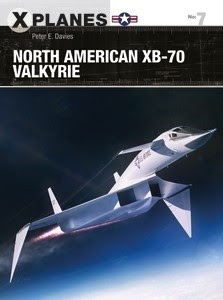

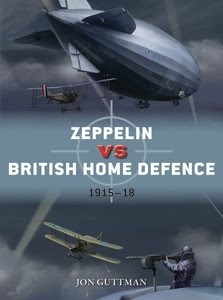

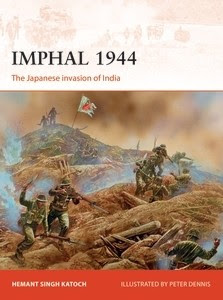


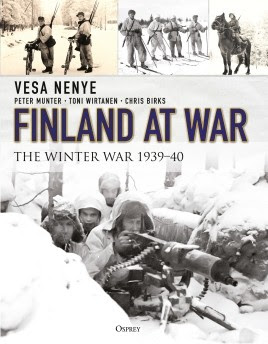
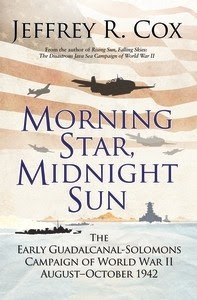
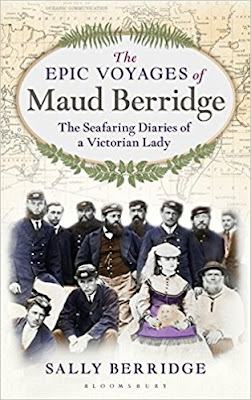
No comments:
Post a Comment